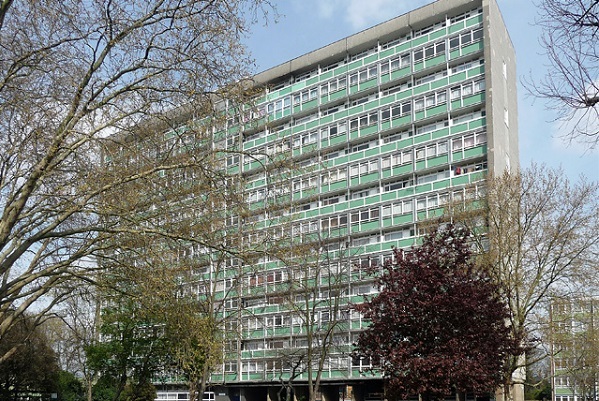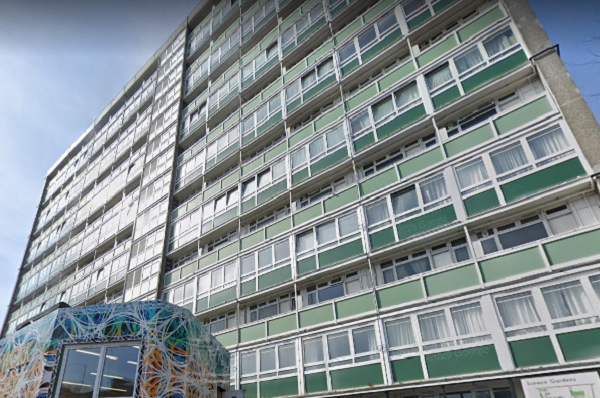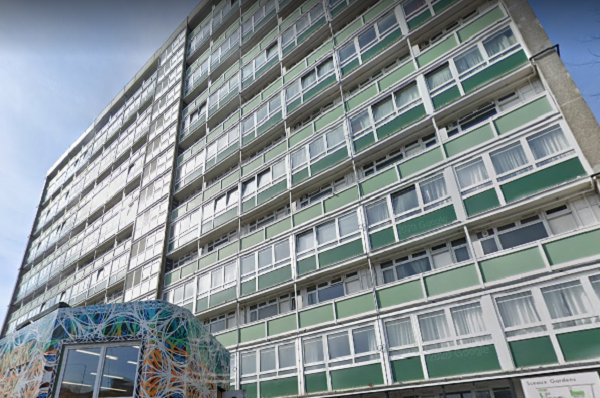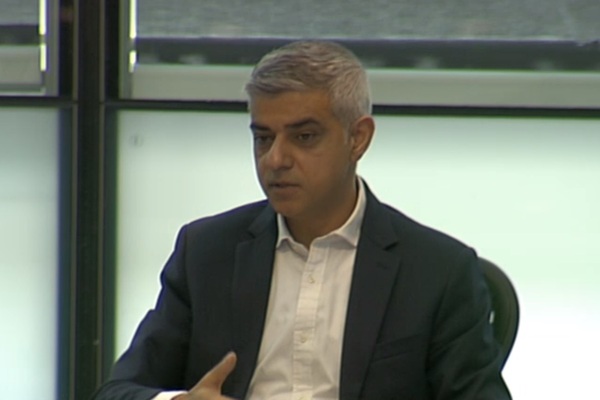You are viewing 1 of your 1 free articles
Panels fitted on Lakanal House after fire will be replaced again due to shifting guidance
Replacement window panels installed on Lakanal House following the deadly blaze in 2009 will be stripped and reinstalled due to shifting government advice on building safety.
The fire at the building in Camberwell, south London, spread up from the sixth floor after igniting combustible high-pressure laminate (HPL) panels which had been installed beneath windows.
These panels were replaced with HPL products with a fire safety rating of Class 0 following an inquest into the fire in 2013 – in accordance with government guidance as it then stood.
But following the Grenfell Tower fire, the government has belatedly tightened standards to only permit materials which are entirely non-combustible, meaning the panels will be replaced again as part of major works on the estate.
The government has faced criticism for not introducing these tougher standards in the aftermath of the Lakanal fire.
Lakanal House panels: the story
- 2006/07: New window panels are installed to the outside of Lakanal House, a block of maisonettes on the Sceaux Gardens Estate in Camberwell, south London, as part of a major refurbishment. The panels are HPL – a product made from compressed wood and resin – made by a company called Trespa.
- 3 July 2009: A fire breaks out in flat 65, breaks out of the window and ignites a panel below the flat above. The subsequent fire kills the occupant of this flat and five others who are trapped by flames and smoke spreading through the building.
- March 2013: A coroner’s inquest into the deaths records narrative verdicts, which include a finding that the panels were Class 3. The jurors add that Class 0 panels would have slowed the spread of the fire but not prevented it. The coroner writes to then-communities secretary Eric Pickles advising him to review building safety guidance “with particular regard to the spread of fire over the external envelope of the building”. Mr Pickles replies indicating this review will not take place until 2016/17.
- December 2013: In the aftermath of the fire, these panels are then replaced by Southwark Council with a similar product with a better fire performance that meets the standard of Class 0 required by government guidance.
- March 2014: An All-Party Parliamentary Group which focuses on fire safety writes to Mr Pickles’ department calling on him to amend the Class 0 standard in the guidance. “Can we really afford to wait for a tragedy to occur before we can amend this weakness?,” they write.
- September 2014: Planning approval is given for the use of ACM cladding on Grenfell Tower in west London. The panels have a certificate which appears to show they have a Class 0 rating.
- 14 June 2017: A fire breaks out at Grenfell Tower and ignites the cladding system, causing a block-wide inferno that kills 72 people.
- October 2018: The government publishes an advice note that says all window panels should meet the standard of limited combustibility – a tougher standard than Class 0.
- Autumn 2019: Southwark Council begins consulting with residents on the Sceaux Gardens Estate regarding the removal and replacement of the replacement Class 0 panels. This project is currently ongoing.
Following an inquest in 2013, the coroner investigating the six deaths at Lakanal House told Mr Pickles to review the official guidance “with particular regard to the spread of fire over the external envelope of the building”.
But this review was put off until 2016/17 and had not completed by the time the Grenfell Tower fire happened – meaning the Class 0 standard was left in the guidance.
The Reynobond ACM cladding product used on Grenfell was sold with a certificate saying it met the Class 0 standard, although European tests have since emerged showing the particular product used on the tower tested to a much lower standard.
“Not tightening the Class 0 standard is the crucial failure after Lakanal, and it goes to the heart of all the advisors to the government,” Arnold Tarling, a chartered surveyor and building safety expert told Inside Housing.
“The Class 0 standard should have been enhanced, there is no way these combustible products would have achieved limited combustibility [the current standard].”
As well as replacing the panels with Class 0 alternatives, Southwark had also replaced foam insulation behind the panels with mineral wool, making them more low risk.
Kieron Williams, cabinet member for housing management and modernisation at Southwark Council, said: “After a fire on the Sceaux Gardens Estate in 2009, we fitted low-risk Type Zero panels to the buildings in our major works programme and we were fully compliant with regulations at the time.
“The government took its time to update fire safety regulations, then after the Grenfell fire in 2017, these regulations were not disseminated until last year. Although the government only requires the new type of panels on buildings over 18m, as a responsible landlord we had already planned to update these and other mid-rise blocks to follow regulations for high rise.”
Sign up for our weekly Grenfell Inquiry newsletter
Each week we send out a newsletter rounding up the key news from the Grenfell Inquiry, along with the headlines from the week
Already have an account? Click here to manage your newsletters











